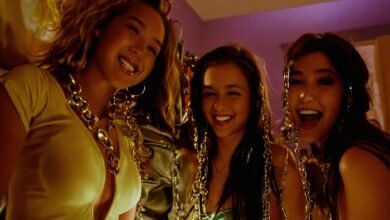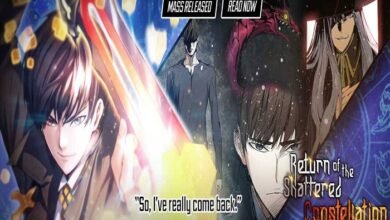Everything You Need to Know About Flicker Munting: The Growing Trend

Flicker munting is a term that has recently gained attention for its unique cultural significance. As people continue to explore trends that merge entertainment, art, and personal expression, flicker munting has become a topic of intrigue. In this post, we’ll take a deep dive into flicker munting, its origins, and its impact on different communities. By the end of this article, you’ll have a comprehensive understanding of what flicker munting is, how it’s practiced, and why it’s growing in popularity.
What is Flicker Munting?
Flicker munting refers to a specific style of artistic expression or performance that combines elements of flickering visuals with subtle movement or dance. Often performed in a controlled setting, it incorporates flickering lights or visual effects, synchronized with graceful, deliberate body movements. This phenomenon has evolved over time, gaining followers in both urban and rural areas, and has become an important part of the broader art and performance scenes.
Flicker munting is an eclectic mix of visual art and physical motion, appealing to those who enjoy experimental performance art. The flickering effect can come from various sources, such as light projections, flickering LEDs, or even organic firelight. This art form focuses heavily on the symbiosis between light and movement, creating an atmosphere that is both entrancing and captivating.
The Origins of Flicker Munting
To truly understand flicker munting, we must explore its origins. This unique practice is believed to have emerged from experimental light performances in the 21st century. Early influences can be traced to the use of light in stage performances, with artists experimenting with visual stimulation and dance. As technology advanced, flicker munting began to incorporate digital tools and lighting systems that allowed for more complex performances and interactions.
The term “flicker munting” was first coined in the early 2000s by a group of experimental artists. It quickly gained traction within certain subcultures, particularly those focused on digital art and performance. As people began to recognize the emotional impact that light and movement could have when combined, the trend spread, and more individuals sought to learn and perform flicker munting.
The Cultural Significance of Flicker Munting
Flicker munting has grown in significance as it intersects with various cultural practices. In some communities, flicker munting is seen as a form of meditation or spiritual practice. The rhythmic movement coupled with flickering lights creates a calming atmosphere that helps participants enter a meditative state. In other circles, it serves as a celebration of digital art and innovation.
In some countries, flicker munting has been embraced as part of local festivals. For example, during certain celebrations, groups perform flicker munting as a way to honor tradition while embracing modern technology. The interplay of light and movement symbolizes the balance between the past and the future. It’s a celebration of change while respecting cultural heritage.
How Flicker Munting Is Performed
Performing flicker munting requires an understanding of both visual and physical elements. First, the space must be carefully prepared with the right kind of flickering light effects, often programmed to change in sync with the performer’s movements. The performer, who may be trained in dance or physical expression, will move in a way that complements the rhythm and intensity of the flicker.
The choreography of flicker munting is not rigid. Instead, it’s fluid, allowing for improvisation. Performers are encouraged to explore different ways to interact with the flickering light, using their bodies to manipulate and respond to the patterns of light around them. The intention is to create a narrative or emotional journey, evoking feelings of awe, wonder, or serenity in the audience.
The Tools Behind Flicker Munting
Behind every flicker munting performance lies a set of sophisticated tools and technologies that help bring the vision to life. The most crucial element is, of course, the flickering light. This can come in various forms, from basic light bulbs to advanced LED projections. Often, software is used to control the flickering patterns, ensuring that they sync up with the movements of the performer.
Additionally, there are specialized sensors that can detect motion, which allows the lighting to react to the performer’s gestures. This creates an interactive experience, where the flicker itself responds to the energy of the performance. Over time, artists have fine-tuned these tools, allowing for more complex and immersive experiences that push the boundaries of what flicker munting can achieve.
The Growing Popularity of Flicker Munting in the Digital Age
In the digital age, the practice of flicker munting has expanded beyond traditional performance spaces. Artists and hobbyists alike have embraced the ability to create digital renditions of flicker munting using software tools and platforms. This accessibility has helped the trend grow exponentially, with more people taking an interest in learning how to incorporate flicker munting into their art and digital media.
Social media platforms such as Instagram, TikTok, and YouTube have played a significant role in spreading the trend. Artists now share their flicker munting performances with a global audience, gaining recognition and building communities of like-minded individuals. The growing interest in immersive digital art has also contributed to the rise of flicker munting as an influential form of expression in both the real and virtual worlds.
The Impact of Flicker Munting on Communities and Art Forms
Flicker munting is changing the way people perceive both light and movement in artistic contexts. In communities that practice this art form, flicker munting fosters a sense of connection, as people gather to share in the experience. Whether in a gallery, theater, or outdoor festival, flicker munting performances create an atmosphere of togetherness and appreciation for the transformative power of light.
Moreover, flicker munting is inspiring new generations of artists to experiment with different mediums and technologies. It encourages a cross-disciplinary approach, where dance, light design, and digital art converge. As more artists experiment with flicker munting, new styles and interpretations emerge, further enriching the cultural fabric of the art world.
Conclusion
Flicker munting is more than just a performance or an artistic trend—it’s a testament to the power of light and movement as tools for self-expression and connection. With its growing popularity and cultural significance, flicker munting is transforming the way we think about art, performance, and digital innovation. Whether you’re an artist, a performer, or simply an admirer of unique art forms, flicker munting offers something for everyone to explore.
As technology continues to evolve, the future of flicker munting looks bright. New tools, techniques, and platforms will only enhance its accessibility, allowing more people to experience and create this fascinating art form. If you’re interested in learning more, there’s never been a better time to dive into the world of flicker munting and experience its magic firsthand.
FAQs
1. What does the term “flicker munting” mean?
Flicker munting refers to a form of art that combines flickering lights and synchronized movement or dance, creating a mesmerizing and immersive experience.
2. How do you perform flicker munting?
Flicker munting is performed by syncing body movements with flickering light patterns, often using specialized technology that controls the lights in response to motion.
3. Where did flicker munting originate?
Flicker munting originated in the early 2000s as part of experimental art movements, combining light performance and dance.
4. Is flicker munting used in festivals?
Yes, flicker munting has been incorporated into festivals, where it is performed as a way to celebrate both tradition and modern technology.
5. How is technology used in flicker munting?
Technology, such as LED lighting, motion sensors, and software, is used to create synchronized light patterns that interact with the performer’s movements.




